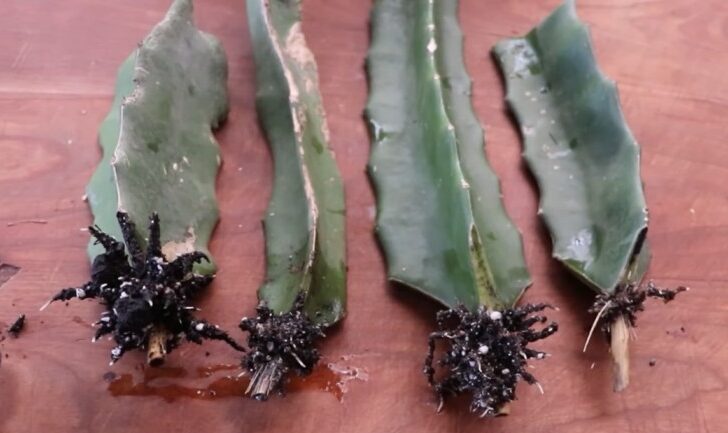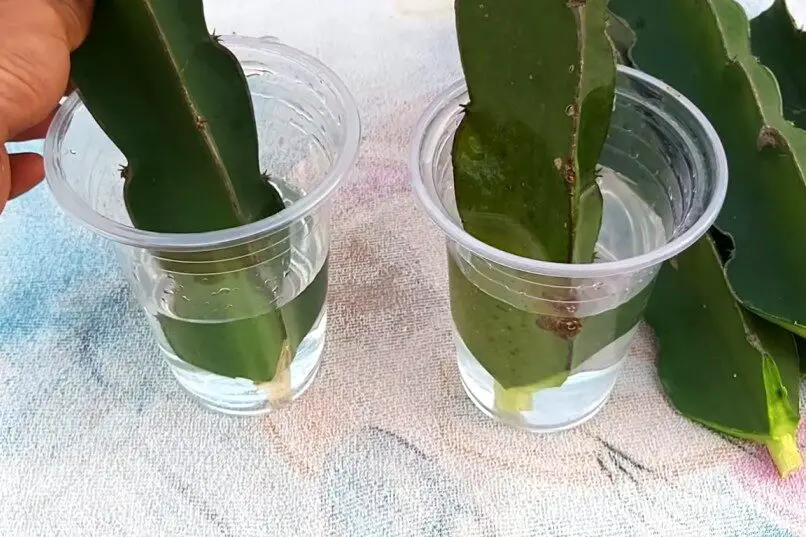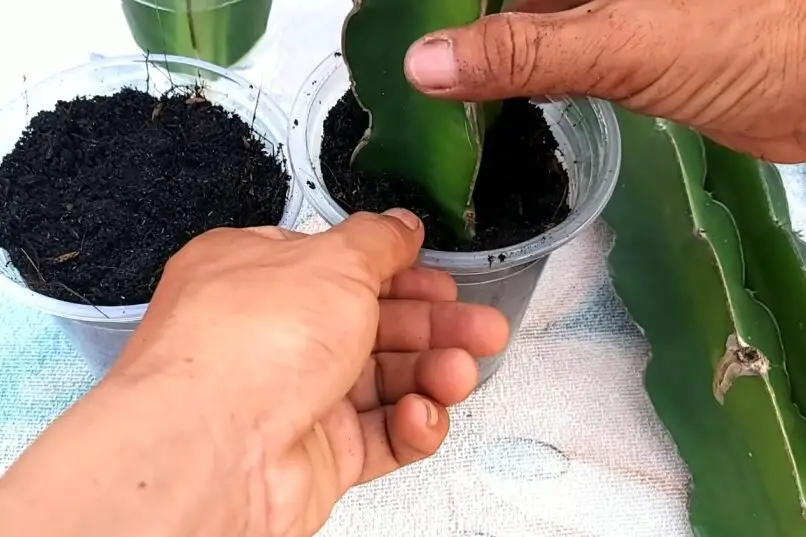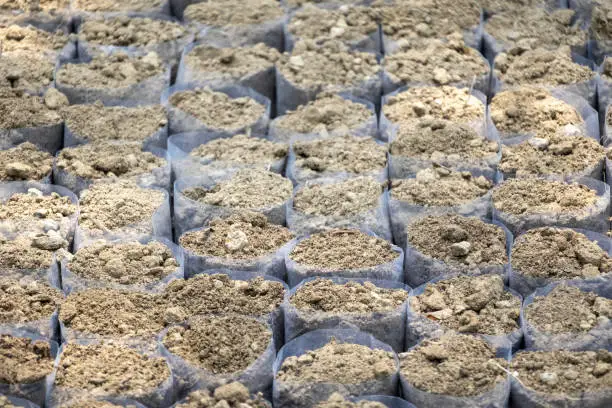In dragon fruit plantation, the development of dragon fruit roots plays a very important role. Whether you’re planting for gardening or commercial farming, the future of the plant—its growth, flower quality, and the red inside fruit you expect—depends heavily on how well the roots are cared for from the beginning.
As someone who has worked with dragon fruit farming, I want to walk you through the 3 best ways to develop strong rootzone at the plantation stage. This knowledge isn’t just theoretical—it comes straight from the soil, sweat, and seasons.
Why Proper dragon fruit roots Development Is Important in Dragon Fruit Plantation

Let’s start with the basics.
Why is so much stress given to dragon fruit roots?
It strengthens the plant: Dragon fruit’s root zone is much smaller compared to many other fruit plants. So right after plantation, you must focus on developing the roots. Weak roots mean weak plants. And if root growth isn’t proper early on, the dragon fruit won’t grow well, and you’ll miss the right fruiting period.
It increases nutrient absorption: Dragon fruit is a heavy feeder. The more nutrition it gets, the better it grows. And that depends on how strong and spread out your dragon fruit root are.
Stronger roots mean better flower and fruit quality: Only when the plant absorbs all the nutrition well through healthy roots will it produce high-quality flowers and fruits—especially the dragon fruit red and yellow variety which is known for its vivid color and taste.
Strong roots keep diseases away: Dragon fruit is a sensitive plant. It’s often called a tropical cactus, and in northern India, where the climate is not naturally ideal, farmers are managing it well only through proper care. A well-fed plant, with healthy roots, can fight off diseases more efficiently.
Now let’s get into further,
3 easy and effective rooting methods that I’ve used myself.

First Step: Preparing the Cutting
Before we talk about the rooting methods, one important step is preparing the cuttings. Here’s what I recommend:
- Choose a healthy 8–10 inch cutting.
- Slightly peel the lower part to expose the center part of the stem. This ensures the outer skin stays out of the soil, reducing fungal infections.
- Let the cutting dry in a shaded area for 2–3 days. This step is vital—it allows the cut end to heal properly.
Always treat this as a safety step. A well-prepared cutting makes all the difference when you’re working with dragon fruit plantation.
Rooting Method 1: Water Propagation
- Take a clean plastic glass and fill it with fresh water.
- Dip the cutting so that only the bottom part is submerged.
- Keep the glass in a shaded area. Don’t overwater.
- In 10–15 days, you’ll start seeing new roots.
Pros:
- You can clearly see root growth.
- Roots develop faster in water than in soil or cocopeat.
- Less risk of fungus as you can easily treat water with fungicide.
Cons:
- Difficult to manage in bulk.
- Roots are not as dense as those formed in soil.
Rooting Method 2: Cocopeat Propagation

Cocopeat is a soft, moisture-retaining medium that works wonderfully for dragon fruit red or yellow variety.
- Fill a plastic cup with cocopeat.
- Insert the cutting slightly into it.
- Keep the moisture light—not too wet.
- Store in partial shade.
In about 10–15 days, you’ll notice root growth.
Pros:
- Maintains moisture well.
- Easy to transplant into soil later.
- Lower risk of fungus compared to regular soil.
Cons:
- No major disadvantage in my experience when using for dragon fruit new plantation.
Rooting Method 3: Sand Propagation

- Fill a polybag or pot with clean sand.
- Push the cutting into it and slightly close the bag to maintain humidity.
- Keep in shade.
In 10–12 days, roots begin to show.
Pros:
- Sand is great for root development due to moisture and oxygen balance.
- Easier transition into new soil during transplantation.
- One of the fastest ways for root development.
Cons:
- Overwatering can cause rot.
- Sand lacks nutrients, so timely fertilization is essential.
Summary Comparison:
- Water method = Fast rooting, visible results, but not dense or strong roots.
- Cocopeat = Balanced speed and strength of roots. Ideal for home growers.
- Sand = Fast and healthy rooting, but needs careful watering and extra nutrients.
So, which method will you choose? If you’re planting dragon fruit red inside at home, I’d recommend starting with cocopeat or sand. Both offer good balance between ease and healthy dragon fruit roots.
Let me know in the comments which method you prefer!
FAQ
Q1: How long does it take for dragon fruit cuttings to develop roots?
Ans: If cuttings are placed properly with adequate shade and moisture, they start developing strong dragon fruit rootzone within 30 to 40 days. That’s when you can transplant them to your plantation structure.
Q2: What nutrients should I give for root growth?
Ans: In the beginning, use humic acid. It’s essential for root development. Regular use is important. Later, NPK fertilizers with high phosphorus also support dragon fruit roots growth.
Q3: Are there any diseases that affect dragon fruit roots?
Ans: Yes, nematodes can be a problem. These tiny pests damage the roots and dry the plant. Regular application of neem cake helps prevent root pests and diseases.
Q4: Can excess water damage dragon fruit roots?
Ans: Definitely. Dragon fruit rootzone don’t like stagnant water. Especially during rains, waterlogging causes root rot.
Q5: Can I root dragon fruit in direct sunlight?
Ans: Not advisable. Rooting requires humidity and controlled shade. Direct sun can dry the cutting or slow down rooting.
Q6: How deep should I plant the cuttings?
Ans: Don’t plant them too deep. Just enough so the peeled part is in contact with the rooting medium. Deep planting can lead to rot.
Q7: Can I reuse the rooting medium?
Ans: You can reuse cocopeat and sand after proper cleaning and drying. But avoid reusing mediums where infected cuttings were placed.
Q8: Should I use rooting hormones?
Ans: You can, but with our methods like magnesium spray and humic fulvic, I’ve seen good results even without hormones. Use only if rooting is slow.
Q9: When should I fertilize after rooting?
Ans: Wait until roots are well formed—about 30–40 days. Start with liquid fertilizers like humic acid and multi nutrients first.
Q10: How often should I water during rooting?
Ans: Light watering every 2–3 days is enough. Keep the medium moist, not soaked.
Q11: Can I do all three methods together?
Ans: Yes, for trials or learning, try all three on different cuttings and observe what works best in your region.
I hope this guide helps you grow stronger, healthier dragon fruit roots and makes your dragon fruit farming more successful.
If you have any question do let me know in the comment section below.


Good information